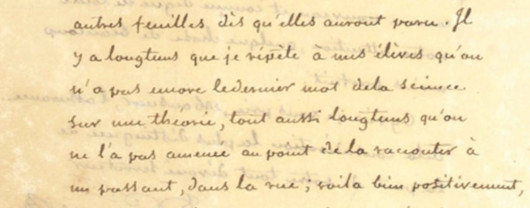William Safire? Marie Shear? Cornell Daily Sun? Walter Gieber? Inis L. Claude Jr.? Ben Yagoda? Jack L. Walker? John Leonard? Anonymous?
 Dear Quote Investigator: A U.S. song that was popular during the Great Depression era depicted an impoverished person making a plaintive request:
Dear Quote Investigator: A U.S. song that was popular during the Great Depression era depicted an impoverished person making a plaintive request:
Brother, can you spare a dime?
This song title inspired the creation of a collection of puns:
Buddy, can you paradigm?
Brother, can you spare a paradigm?
Sister, can you paradigm?
William Safire, the language columnist “The New York Times”, used the second of these expressions. Would you please explore the provenance of this wordplay?
Quote Investigator: The earliest match located by QI appeared in 1933 within the student newspaper of the University of North Carolina at Chapel Hill called “The Daily Tar Heel”. The paper acknowledged another college while printing the pun. Boldface added to excerpts by QI:[1] 1933 January 20, The Daily Tar Heel, To Our Hall Of Fame We Nominate, Quote Page 2, Column 6, Chapel Hill, North Carolina. (Newspapers_com)
To Our Hall Of Fame We Nominate
The Cornell Daily Sun for: “Then there’s the song the Greek prof sings in his classes—Buddy Can You Paradigm?”
Below are additional selected citations in chronological order.
Continue reading “Brother, Can You Paradigm?”
References
| ↑1 | 1933 January 20, The Daily Tar Heel, To Our Hall Of Fame We Nominate, Quote Page 2, Column 6, Chapel Hill, North Carolina. (Newspapers_com) |
|---|
 Dear Quote Investigator: In 1900 the influential German mathematician David Hilbert addressed the “International Congress of Mathematicians” held in Paris. He presented a collection of unsolved problems which has had an enormous influence in guiding research during the following century and beyond.
Dear Quote Investigator: In 1900 the influential German mathematician David Hilbert addressed the “International Congress of Mathematicians” held in Paris. He presented a collection of unsolved problems which has had an enormous influence in guiding research during the following century and beyond.
 Dear Quote Investigator: For decades pop-psychology has emphasized the task of “finding yourself”, i.e., identifying your deepest values, abilities, feelings, and desires. Yet, these qualities are not immutable. Instead, living fully means endlessly recreating yourself. Here are two versions of a pertinent saying:
Dear Quote Investigator: For decades pop-psychology has emphasized the task of “finding yourself”, i.e., identifying your deepest values, abilities, feelings, and desires. Yet, these qualities are not immutable. Instead, living fully means endlessly recreating yourself. Here are two versions of a pertinent saying: Dear Quote Investigator: A famous horror writer employed a comically gruesome paraprosdokian when discussing temperament. There are many phrasings for this quip. Here is one:
Dear Quote Investigator: A famous horror writer employed a comically gruesome paraprosdokian when discussing temperament. There are many phrasings for this quip. Here is one: Dear Quote Investigator: When the famous science fiction author and social critic H. G. Wells envisioned utopia he wished to see ubiquitous bicycle paths winding through forests and gardens. Would you please help me to find a citation?
Dear Quote Investigator: When the famous science fiction author and social critic H. G. Wells envisioned utopia he wished to see ubiquitous bicycle paths winding through forests and gardens. Would you please help me to find a citation? Dear Quote Investigator: The prominent British author and literary critic Rebecca West once wrote about the necessity to be loyal to one’s own desires. Would you please help me to find a citation?
Dear Quote Investigator: The prominent British author and literary critic Rebecca West once wrote about the necessity to be loyal to one’s own desires. Would you please help me to find a citation? Dear Quote Investigator: Some envision heaven filled with a joyous, loving, and interconnected group of people united on a higher spiritual plane. If one is a member of a happy family here on Earth then it is possible to obtain a glimpse of this future possibility. One may express this notion as follows:
Dear Quote Investigator: Some envision heaven filled with a joyous, loving, and interconnected group of people united on a higher spiritual plane. If one is a member of a happy family here on Earth then it is possible to obtain a glimpse of this future possibility. One may express this notion as follows: Dear Quote Investigator: Humanity takes arrogant pride in the knowledge it has accumulated over the centuries. Yet, it is a paltry amount when compared to the vast treasure troves that remain undiscovered in the uncharted regions of space and time. I roughly recall a saying on this theme that emphasized humility:
Dear Quote Investigator: Humanity takes arrogant pride in the knowledge it has accumulated over the centuries. Yet, it is a paltry amount when compared to the vast treasure troves that remain undiscovered in the uncharted regions of space and time. I roughly recall a saying on this theme that emphasized humility: Dear Quote Investigator: In the 21st century the insights gained via science have re-emerged as centrally important to the flourishing of our planet and humanity. Apparently, a researcher enthralled by work was told that she was placing too much emphasis on science. She replied:
Dear Quote Investigator: In the 21st century the insights gained via science have re-emerged as centrally important to the flourishing of our planet and humanity. Apparently, a researcher enthralled by work was told that she was placing too much emphasis on science. She replied: